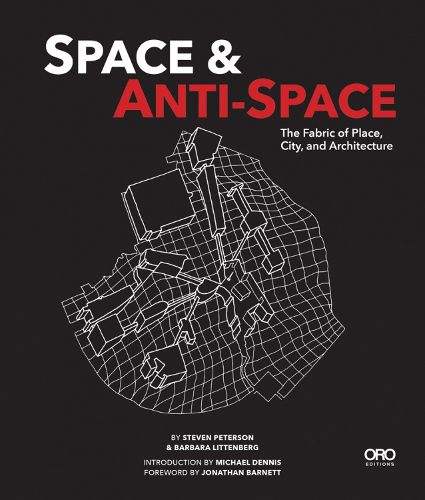Readings Newsletter
Become a Readings Member to make your shopping experience even easier.
Sign in or sign up for free!
You’re not far away from qualifying for FREE standard shipping within Australia
You’ve qualified for FREE standard shipping within Australia
The cart is loading…






This book challenges the conventional idea of what constitutes the physical form of the contemporary city. Observing the absence of extended urban fabrics - the missing urbanism - in the new global cities developed today, it argues that these cities are merely statistical accumulations of density that lack the positive attributes of a genuine urban condition. Cities as urban places cannot be made by individual buildings alone but rather depend on the intertwined combination of an architecture that is bound to the creation of public spaces and streets, and engaged in the structure of urban blocks to form a complex field pattern of interactive solids and voids. Broad in scope, the book explores the nature of the fundamental relationship between architecture and urbanism as one of spatial formation. As an independently designed entity, the city forms the ordering framework in which architecture is partially subordinated to the mutual sustainability of the overall urban fabric. If a new urban architecture is to be an integral constituent of public place making, it must be composed using a radically different paradigm of positive, figurally constructed ‘space’ rather than the indefinite background of ‘anti-space’ as exemplified in the chapter on Mies van der Rohe’s architectural quest for the ineffable modern void. These two different spatial models are explored in depth in the eponymous article, ‘Space and Anti Space,’ first published in the Harvard Architectural Review in 1980, which forms the core of the book and postulates that the underlying attitudes toward spatial formation, at both domestic and urban scales, determine our ability to shape place and human experience. AUTHORS: Barbara Littenberg and Steven Peterson are New York-based architects, urban designers, and educators, who pursued an unconventional practice that explored the relationship between architecture and cities through an amalgam of competitions, public debates, lectures, seminars, teaching and collaborative charrettes. They have worked on urban problems at sites in Rome, Paris, Montreal, and New York, culminating in their proposal for the ‘World Trade Center Site Innovative Design Study’ competition of 2002. Barbara taught architecture for 25 years. She was Associate Professor at the Yale University Graduate School of Architecture for 10 years, directing the Graduate Urban Housing studio. She was on the faculty of graduate schools of architecture at Princeton, Columbia and Harvard universities, and the Kei Distinguished Professor at the University of Maryland. She also taught in Rome, Italy for Notre Dame University’s architectural program. SELLING POINT:
In a series of essays, articles and urban projects extensively illustrated by plans, analytic diagrams, and dramatic images, this book makes a visual and verbal argument for the steps that need to be taken to re-urbanise the city in order to achieve an urbanity that consists of multiple discrete places that depend on the essential concept of contained geometrical space 250 colour images
$9.00 standard shipping within Australia
FREE standard shipping within Australia for orders over $100.00
Express & International shipping calculated at checkout
This book challenges the conventional idea of what constitutes the physical form of the contemporary city. Observing the absence of extended urban fabrics - the missing urbanism - in the new global cities developed today, it argues that these cities are merely statistical accumulations of density that lack the positive attributes of a genuine urban condition. Cities as urban places cannot be made by individual buildings alone but rather depend on the intertwined combination of an architecture that is bound to the creation of public spaces and streets, and engaged in the structure of urban blocks to form a complex field pattern of interactive solids and voids. Broad in scope, the book explores the nature of the fundamental relationship between architecture and urbanism as one of spatial formation. As an independently designed entity, the city forms the ordering framework in which architecture is partially subordinated to the mutual sustainability of the overall urban fabric. If a new urban architecture is to be an integral constituent of public place making, it must be composed using a radically different paradigm of positive, figurally constructed ‘space’ rather than the indefinite background of ‘anti-space’ as exemplified in the chapter on Mies van der Rohe’s architectural quest for the ineffable modern void. These two different spatial models are explored in depth in the eponymous article, ‘Space and Anti Space,’ first published in the Harvard Architectural Review in 1980, which forms the core of the book and postulates that the underlying attitudes toward spatial formation, at both domestic and urban scales, determine our ability to shape place and human experience. AUTHORS: Barbara Littenberg and Steven Peterson are New York-based architects, urban designers, and educators, who pursued an unconventional practice that explored the relationship between architecture and cities through an amalgam of competitions, public debates, lectures, seminars, teaching and collaborative charrettes. They have worked on urban problems at sites in Rome, Paris, Montreal, and New York, culminating in their proposal for the ‘World Trade Center Site Innovative Design Study’ competition of 2002. Barbara taught architecture for 25 years. She was Associate Professor at the Yale University Graduate School of Architecture for 10 years, directing the Graduate Urban Housing studio. She was on the faculty of graduate schools of architecture at Princeton, Columbia and Harvard universities, and the Kei Distinguished Professor at the University of Maryland. She also taught in Rome, Italy for Notre Dame University’s architectural program. SELLING POINT:
In a series of essays, articles and urban projects extensively illustrated by plans, analytic diagrams, and dramatic images, this book makes a visual and verbal argument for the steps that need to be taken to re-urbanise the city in order to achieve an urbanity that consists of multiple discrete places that depend on the essential concept of contained geometrical space 250 colour images